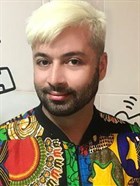
Top stories





Marketing & Media#AfricaMonth: How Sarah Collins, founder of Wonderbag, is changing lives globally
Evan-Lee Courie 13 hours

More news




Marketing & Media
Q&A with Colleen Louw - Turnaround specialist and managing director of Kaya 959
Kaya 959 1 day


Marketing & Media
The gender price gap: Nedbank exposes the true cost of womanhood
DNA Brand Architects 1 day





ESG & Sustainability
Lesotho Highlands Water Project contractor suspended for polluting rivers







Construction & Engineering
Families in Cape Town’s squalid backyards are still waiting for promised housing project

ESG & Sustainability
Plan to use properties owned by City of Cape Town for homeless project


ESG & Sustainability
Gauteng welfare organisations worried about late payments





















